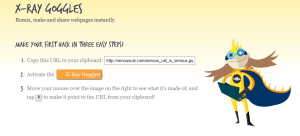I am continuing to reflect on my learning within the clmooc environment. The learning curve in clmooc has not been as steep as either MoocMooc or ETMOOC as indicated by my Prezi contribution of a few weeks ago. I’m not feeling guilty anymore because I don’t post on everyone’s contribution, I don’t always do all the work, and I am more forgiving of my mistakes. I used to feel guilty though. It’s hard to break old ways of thinking and doing.
2013 has been a year of tremendous growth for me. I`m much more comfortable in the socially networked communication environment and more willing to take the risks of creating and sharing. I want to connect and I am willing to make those connections. As George Siemens says “Our connections are now global,” (Thanks Diane Samson for sharing this video.) I don’t think it is because I have removed my super-ego from the equation, but that I realize that much of the negative views I have of my work are my own. So while I am still very critical of what I make, being in this environment gives me the push I need to produce work that is NOT perfect. In this environment it is not expected. And that is so freeing.
I’m more willing to try a variety of tools that the web has to offer now. Since starting clmooc I’ve used Animoto, Prezi, and Infinite Monkeys for the first time, gone back and used Popcorn Maker again (which has already been updated since I used it last! That was only four months ago!), tried my hand at Thimble again (baby steps, baby steps), and attempted to attach my blog RSS, which I have 50/50 chance of doing successfully- who knew this would continue to plague me after all these months! Perhaps it is because I don’t want to create a new blog just for clmooc. But that’s ok too. I’ll get it eventually. And when I get my new computer, I will make a stop action film!
I love learning the new ways of making, but that is because I enjoy the process of learning how to use a tool as much as I love the creation that results from the use of the tool. It melds both my analytical nature of “How does this work?” with my creative side of “What can I make?” And what finer type of learning is there? Thanks clmooc for giving me a summer of makes!



